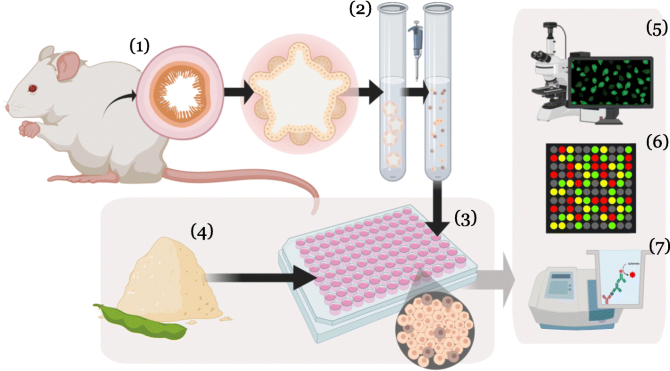
News
Mini-guts as alternative for animal tissue
Intestinal organoids or mini-guts can be used as models to evaluate transport and interactions between dietary ingredients with the gut wall. That was discovered by a multidisciplinary research team, led by Prof. Jerry Wells of Animal Science Group, Wageningen University and Research (WUR). The research team published their study on the effects of alternative protein sources on the small intestine in the Journal of Animal Science and Biotechnology
An organoid is a miniaturized and simplified version of an organ. They provide an excellent laboratory (in vitro) model system to study complex traits which are not easily accessible in animals (in vivo). The small intestine being an example.
Alternative protein sources
As proof of principal, the researchers introduced alternative protein sources, present in animal feed, to organoids. They found that the ‘mini-guts’ have a similar response to the protein sources as the intestines in the animal. This is in line with previously published results of (in vivo) rodent studies.

Frozen
“These results highlight the possibilities to use organoids to address scientific questions. Moreover gut organoids can be generated from tissues from animals killed for food production, frozen and grown for at least several months as an alternative to animal research.” says prof. Wells.
Next steps: Organoids derived from livestock species
The researchers advise using host-specific organoids to measure the reactions of nutrient or microbes. Thus, for chicken feed research, chicken organoids are preferred, and for pig feed research, pig organoids should be used.
In the Animal Sciences Group, of WUR Host-Microbe Interactomics and Wageningen Livestock Research), pig organoids of both small and large intestine have been developed. Like the mice intestinal organoids, the pig intestinal organoids offer the possibility to measure intestinal functionality including nutrient absorption, barrier function, and immune response.